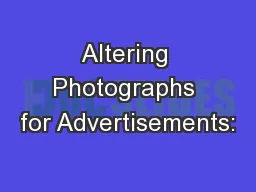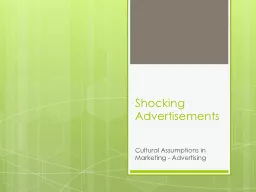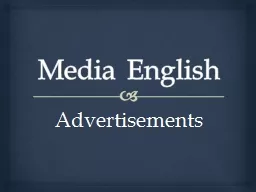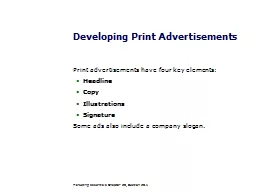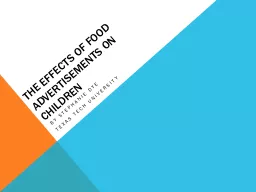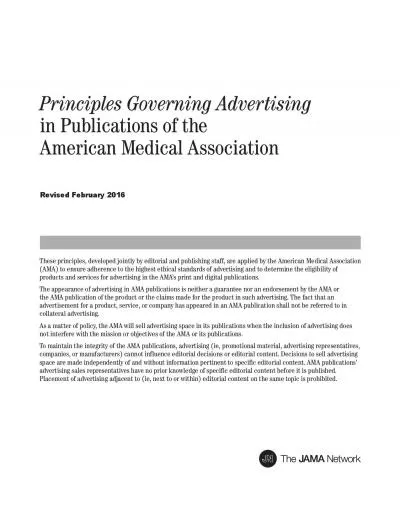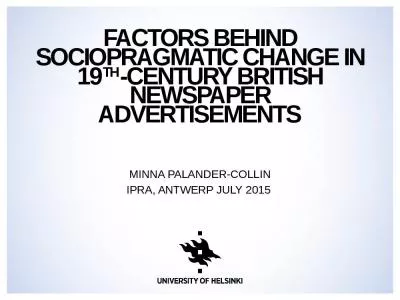PPT-Advertisements By Steven Nahill
Author : yoshiko-marsland | Published Date : 2020-01-17
Advertisements By Steven Nahill 28 September 2014 Parts of an Advertisement Purpose Picture Language Audience Appeals and Strategies Purpose inform increase awareness
Presentation Embed Code
Download Presentation
Download Presentation The PPT/PDF document "Advertisements By Steven Nahill" is the property of its rightful owner. Permission is granted to download and print the materials on this website for personal, non-commercial use only, and to display it on your personal computer provided you do not modify the materials and that you retain all copyright notices contained in the materials. By downloading content from our website, you accept the terms of this agreement.
Advertisements By Steven Nahill: Transcript
Download Rules Of Document
"Advertisements By Steven Nahill"The content belongs to its owner. You may download and print it for personal use, without modification, and keep all copyright notices. By downloading, you agree to these terms.
Related Documents


